xTiles has won many fans with its flexible “board” of cards where you can pin notes, files and links. Yet once a project grows, its limits become obvious: shallow hierarchy, patchy offline access, few integrations and almost no team-level controls. If you have reached that point, it is time to pick an alternative to xTiles that meets 2025 requirements. Below we explain why people hunt for substitutes, list the key selection criteria and deliver a side-by-side review of ten services — from the minimalistic Google Keep to the professional Worksection.
Why Do Users Look for xTiles Alternatives?
Despite clear strengths — an intuitive visual editor, quick notes and real-time collaboration — xTiles starts to fall short when your board morphs into a full workplace ecosystem. First, structural depth is limited; once you juggle hundreds of cards, searching becomes a quest, and complex hierarchies slip into chaos. Second, integrations are scarce: the API is basic, and there are hardly any ready connectors for popular CRMs or analytics tools. Third, the platform lacks advanced team features: no time tracking, limited permissions, no financial reports, and performance dips at scale. Finally, enterprises face security hurdles: data lives only on the vendor’s cloud, so no local backups. All that drives people toward richer “information management” with robust time trackers, stronger integrations and reliable offline support.
Criteria for Choosing a Visual-Editor Alternative
Before migrating hundreds of notes and media files, define what really matters. If your top need is visual idea mapping, focus on kanban boards, mind-maps and flexible block layouts. Anyone building a full “knowledge base” will want sturdy folders, tags and deep search. Teams require roles, granular permissions and time tracking to create accurate client reports. Integrations matter, too: direct export to Google Docs, calendar sync, web-hooks and APIs. Remote work calls for an offline mode or at least a local cache, while companies with strict security rules welcome self-hosted backups. Finally, price: an xTiles alternative must not only be powerful but also transparent, with no hidden charges for basic modules.
Best xTiles Alternatives in 2025
Worksection
Worksection stands out by blending visual project control, knowledge storage and full-scale time tracking. Tasks switch between list view, Kanban boards or Gantt charts with one click, so designers, developers and managers each see data their way. Unlike xTiles, where cards mostly store notes, Worksection tasks hold files, checklists, comments and time logs in one place. Integrations go beyond a vanilla API: ready connectors exist for Slack, Google Calendar, Zapier plus web-hooks for custom flows. A built-in time tracker lets staff log hours directly on tasks, while managers pull precise reports without add-ons. Permissions drill down to sub-folders, ensuring clients see only what they should. All features — including Gantt, reports and multi-level roles — ship in the entry plan; annual billing can drop costs below 5 USD per user. For large enterprises there is an Enterprise tier with automatic backups, custom domains and priority 24⁄7 support — benefits xTiles cannot match even at extra cost.
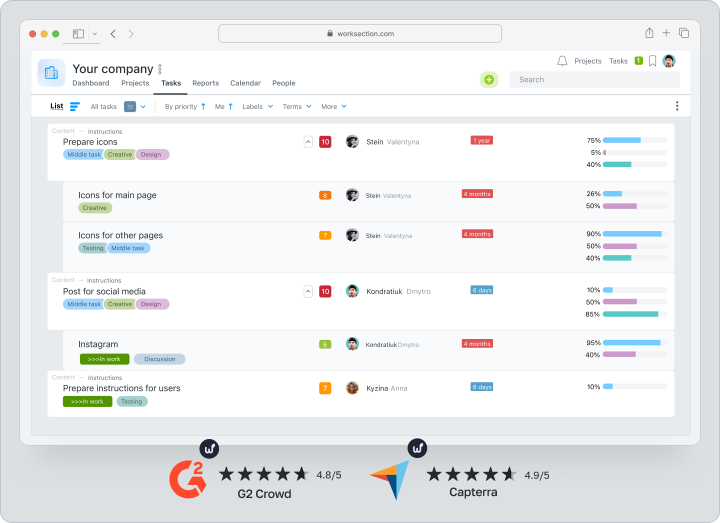
Notion
Notion remains the “Swiss-army knife” for building a knowledge base. Tables, pages, embedded scripts and thousands of public templates let you craft anything — from editorial calendars to a CRM. Its main edge is flexible structure: nested databases, formulas and backlinks. The price is complexity: to shape an advanced team wiki, you will sketch relation schemes and tweak permissions. Integrations arrive via an official API and a huge dev community, which is a plus. Lack of a true offline mode (mobile caching is partial) and a 50-block cap for newcomers are weak spots. Still, the free plan already packs kanban, calendars and real-time co-editing.
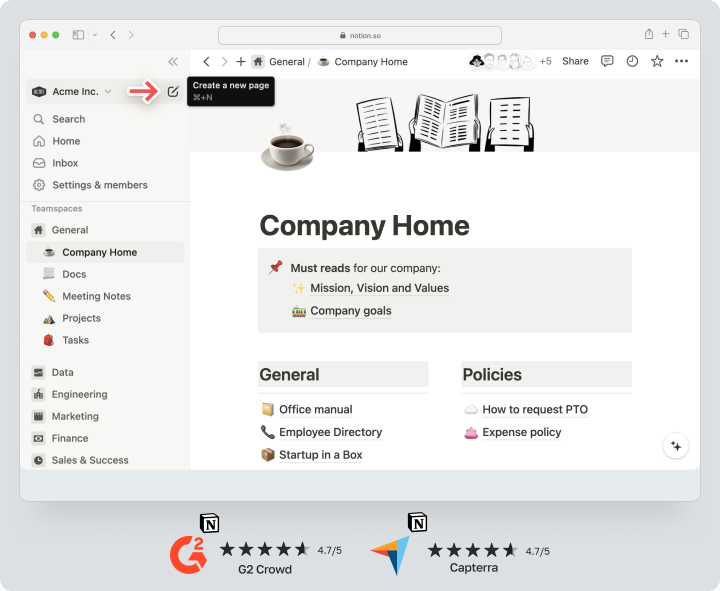
Milanote
Milanote was built for creatives — designers, screenplay writers, marketers. The UI feels like a studio wall of sticky notes, images and arrows. Toss ideas onto an infinite canvas, group columns and draw connections. Compared to xTiles, Milanote supports high-resolution images and simple PDF exports. Collaboration works through comments and shared access, yet there is no time tracker or advanced roles — limiting corporate rollouts. The free tier allows up to 100 notes, after which you upgrade. Integrations are basic — essentially Figma, Slack and Adobe XD.
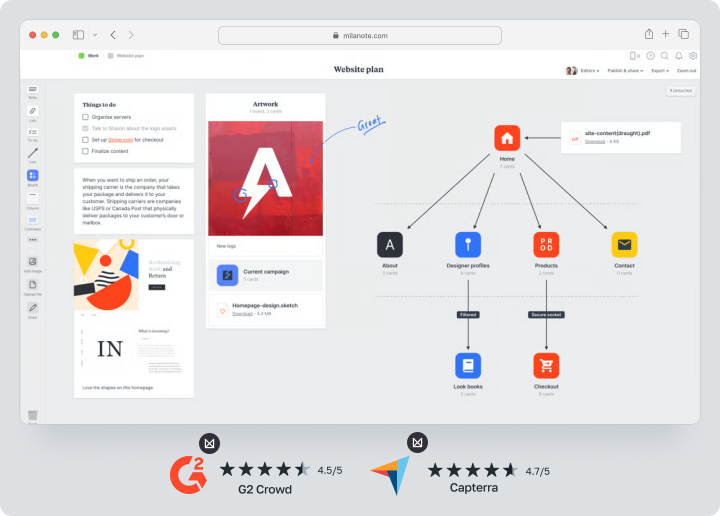
ClickUp Docs
ClickUp is already known for task management, and recent updates added Docs — a module that merges rich text and tasks. Draft content, highlight a paragraph, and it becomes a task with an assignee and deadline. For teams, it marries editing with PM in one window. Visual modes include list, kanban, timeline and mind-map. Permissions are granular with guest clients. Downsides: navigation gets tricky in huge task sets, and the sheer number of micro-features can overwhelm newcomers. The free plan offers unlimited users, yet some reports and custom fields cost extra.
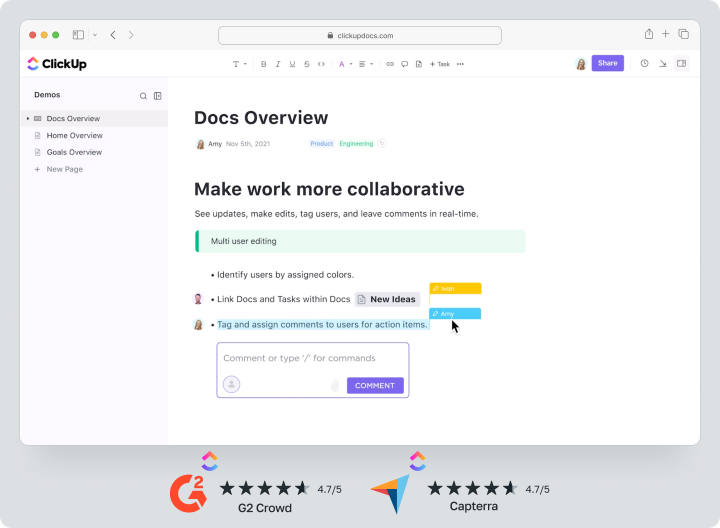
Trello
Trello remains the archetype kanban tool: cards, columns and “power-ups” that upgrade a simple board into a GTD system. The key is effortless onboarding: any novice masters drag-and-drop in minutes. You can adapt Trello for visual note boards via covers, checklists and labels, but overcrowded boards can feel sluggish. In 2025 Atlassian expanded the free tier to ten workspaces, a gift to freelancers. Integrations arrive as power-ups (Slack, Google Drive, Jira), but more complex scenarios carry fees.
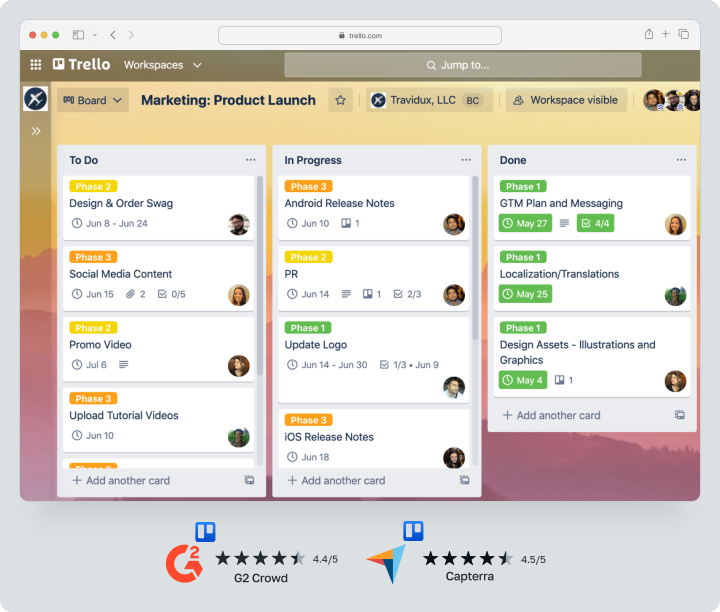
Obsidian
Obsidian is a local Markdown vault with a unique graph view of note links. Every entry is a .md file in your folder, meeting strict security and offline demands. The graph reveals concept connections, turning scattered thoughts into a knowledge web. Plugins unlock endless options, from calendars to GTD suites. Collaboration is possible via paid Obsidian Sync or Git. Permissions need manual setup, yet for researchers and students it is the perfect “second brain” unhindered by vendor clouds.
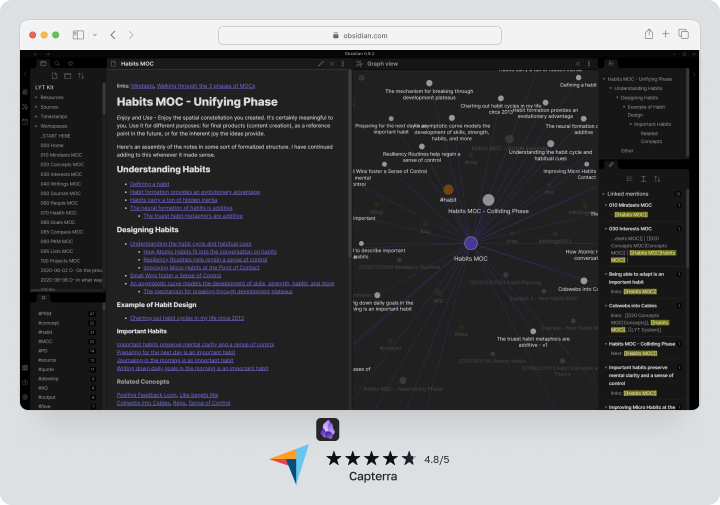
Heptabase
Heptabase marries mind-mapping with a whiteboard that scales infinitely. Create cards, cluster them, draw links and progress from raw ideas to deep analysis. Analysts and product managers love it for exploring complex topics and capturing insights. Imports cover PDFs, handwriting and images. Team edition is still in beta, so role management is limited. There is no free tier, but a one-month trial lets you gauge its power.
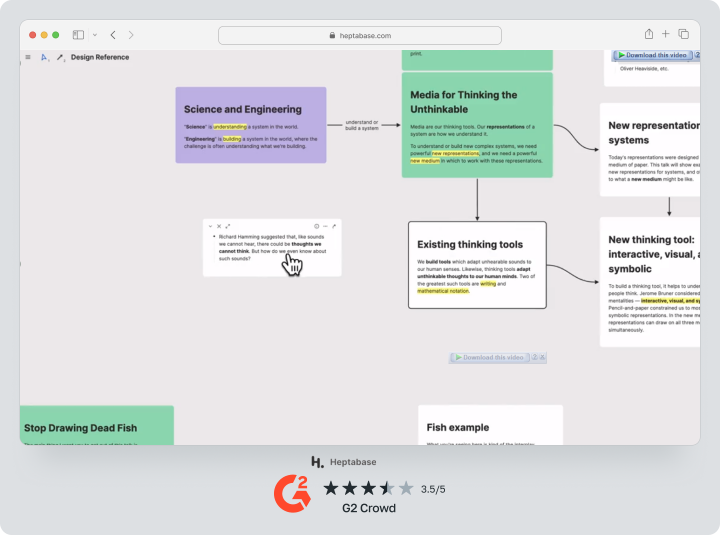
Google Keep
Google Keep is a minimalist canvas for quick notes, voice memos and checklists. Tight integration with Google Workspace lets you dock notes inside Gmail or Docs. For personal GTD it shines, yet it lacks nested folders and has simple tag search. Teamwork equals shared notes — no roles or reports. There is no paid plan; the service is fully free but storage counts against your Google Drive quota.
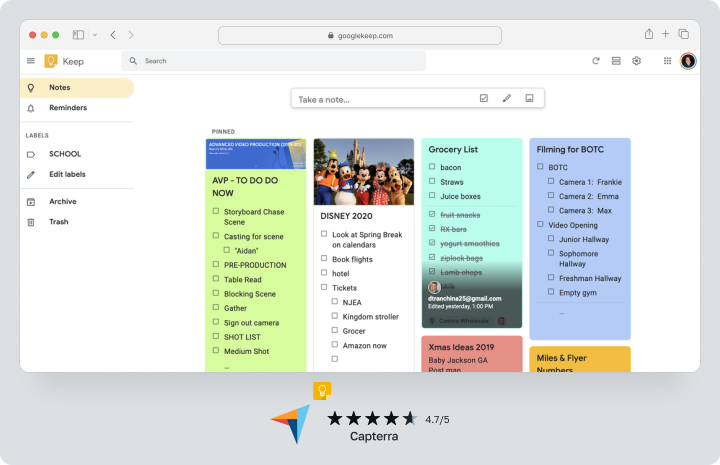
FuseBase (formerly Nimbus Note)
Nimbus Note brands itself as “structured storage.” Expect folder trees, tags, a web-clipper and reliable offline caching. Unlike xTiles, it embeds interactive widgets (Trello cards, Google Calendar) right into notes. Team access offers granular permissions, a built-in chat and guest links — handy for agencies. Weak points: limited analytics and no Gantt chart. The free plan caps you at five workspaces.
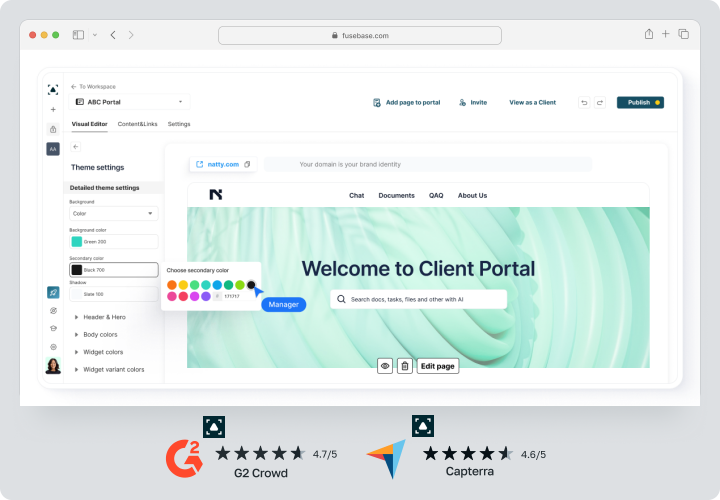
Evernote
Evernote, a genre classic, has rebranded with faster search and a home page of widgets. Strengths include a powerful web-clipper and OCR for PDFs. Personal use is still easy, but team scenarios suffer from dated permission models and missing boards. After price hikes many move to more modern tools, though Evernote’s template base and ecosystem remain robust.
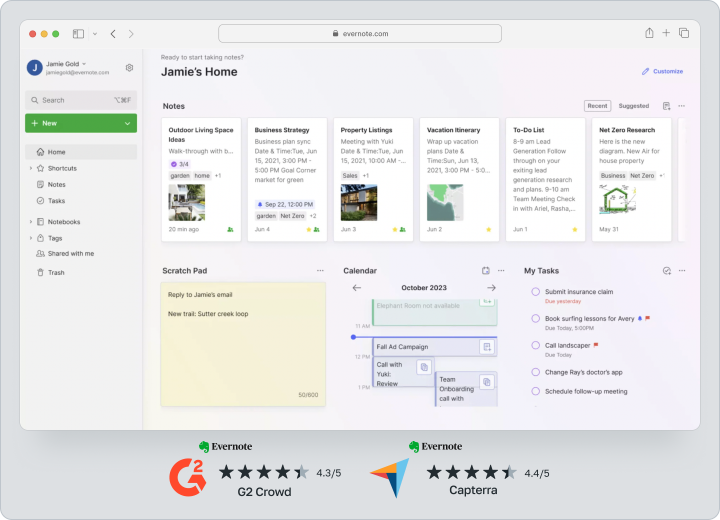
Comparison Table of the Best xTiles Alternatives
| Service | Visual Options | Data Structure | Team Features | Offline Mode | Integrations / API |
| Worksection | Kanban, Gantt, list | Folders, subtasks, tags | Time tracker, roles, reports | Mobile cache | Slack, GDrive, Zapier |
| Notion | Kanban, gallery, calendar | Databases, relations, formulas | Roles, guest access | Partial | Official API, 100s plugins |
| Milanote | Infinite canvas, stickers, arrows | Columns, groups | Comments only | None | Figma, Slack |
| ClickUp Docs | List, kanban, mind-map, timeline | Folders, statuses | Tasks from text, roles | Desktop app | 1 000+ via Zapier |
| Trello | Kanban | Cards, labels | Comments, checklists, power-ups | Mobile cache | 200+ power-ups |
| Obsidian | Link graph | Local Markdown files | Plugins, Git sync | Full | Plugin marketplace |
| Heptabase | Mind-map, whiteboard | Cards, clusters | Beta phase | Partial | PDF import, web-clip |
| Google Keep | Tiles, color tags | Tags only | Shared notes | Full | Google Workspace |
| FuseBase (formerly Nimbus Note) | Doc pages, kanban | Folders, tags | Chat, roles, guest links | Cache | Trello, Google Calendar |
| Evernote | List, gallery | Notebooks, tags | Spaces, basic roles | Limited | Web-clipper, Zapier |
Which Platform Should You Choose in 2025?
Your decision hinges on workflow. If you need pure minimalism and instant mobile access, Google Keep shines. For an all-embracing knowledge base with tables, tags and formulas, Notion leads the pack. Creative teams craving visual mood-boards will love Milanote or Heptabase. When reports, time tracking and permission granularity are mission-critical, Worksection deserves a close look: it unites tasks, files, discussions and finance in one screen, and every feature is unlocked from the first plan — no forced upgrades. If classic kanban with vast integrations is your aim, Trello or ClickUp lets you launch within hours.
Frequently Asked Questions (FAQ)
Which xTiles alternative is best for visual notes?
If your priority is pure visual storytelling, try Milanote: a freeform canvas, hundreds of stickers and high-resolution image support make collaboration almost tangible. Heptabase offers similar freedom but tilts toward analytical mind-mapping — perfect for digging deep into complex topics.
Are there free xTiles equivalents?
Yes. Notion, Trello and Obsidian all provide permanent free plans with unlimited users (Notion — personal use only). Trello allows unlimited boards across ten workspaces, and Obsidian needs no cloud at all — your data lives locally. These options suit students or small projects nicely.
How is Worksection different from xTiles?
Worksection is a full project-management platform, not just a note board. Tasks, files, comments and time logs reside together, while Gantt charts and time-based reports come in the base plan. You can invite clients, fine-tune their permissions, export finance data and even generate invoices directly inside the system. xTiles focuses on visual notes and lacks robust PM features or time tracking. If you want to see the entire lifecycle — from idea to invoice — Worksection is the more mature and reliable replacement.